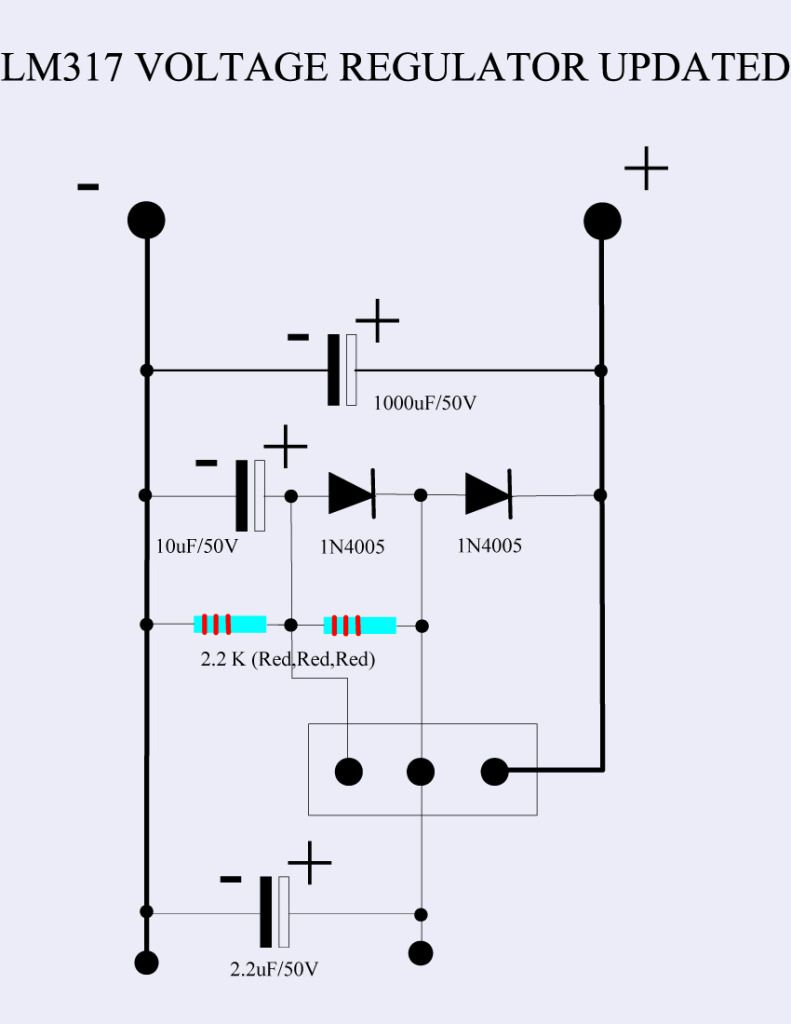Question on Schematic
G'Day Torpex
There was some time back a dissucion with regard the above mentioned Voltage regulator Page 9 post 256 R2,R1 done away with and R3 changed to 2k2 and another 2k2 added R4 cganged to a 10uf 50v cap and another 2.2uf 50v cap added
the outcome was Here and this is the one I used

It has an imput of 38v and output 12.4v
Kind regards

Originally posted by torpex
View Post
There was some time back a dissucion with regard the above mentioned Voltage regulator Page 9 post 256 R2,R1 done away with and R3 changed to 2k2 and another 2k2 added R4 cganged to a 10uf 50v cap and another 2.2uf 50v cap added
the outcome was Here and this is the one I used

It has an imput of 38v and output 12.4v
Kind regards











Comment